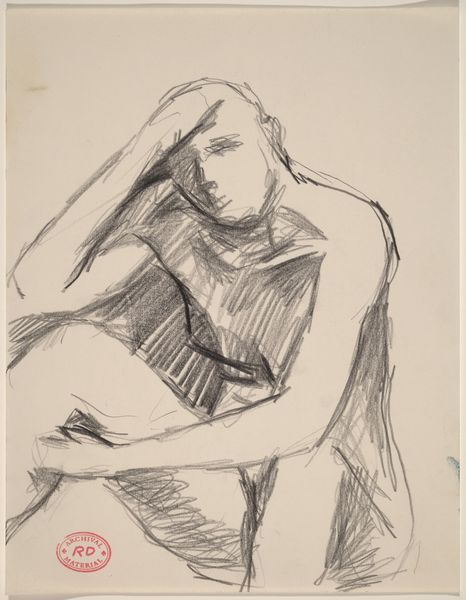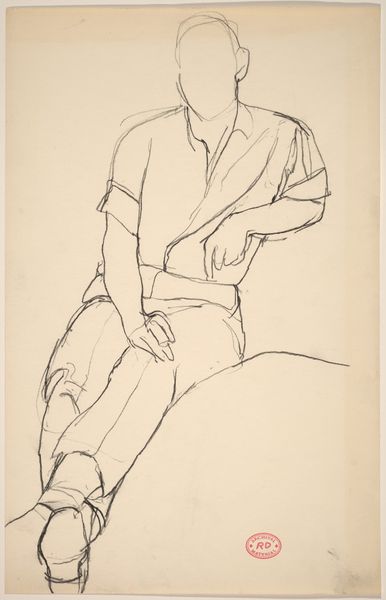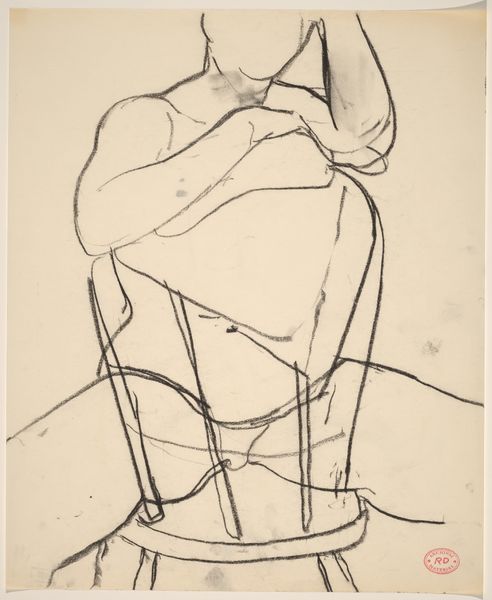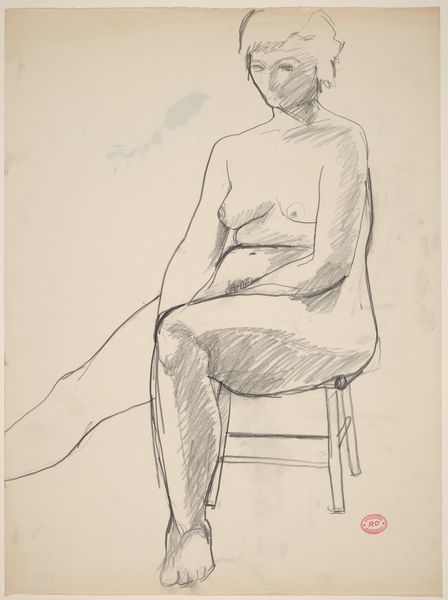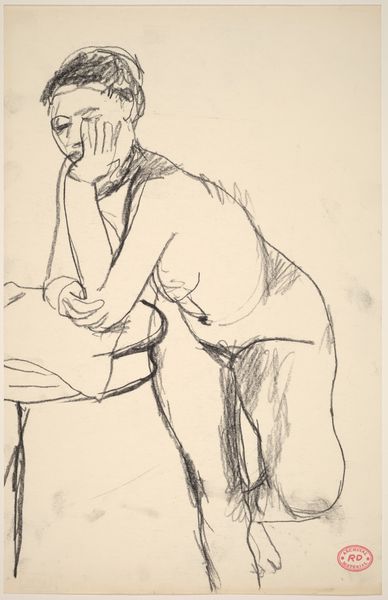![Untitled [woman seated at the edge of a cushion] by Richard Diebenkorn](/_next/image?url=https%3A%2F%2Fd2w8kbdekdi1gv.cloudfront.net%2FeyJidWNrZXQiOiAiYXJ0ZXJhLWltYWdlcy1idWNrZXQiLCAia2V5IjogImFydHdvcmtzLzRhZmFiZmY2LWM1NjMtNGEzYi04NmJmLTUyYjc5NGVhMjc0NS80YWZhYmZmNi1jNTYzLTRhM2ItODZiZi01MmI3OTRlYTI3NDVfZnVsbC5qcGciLCAiZWRpdHMiOiB7InJlc2l6ZSI6IHsid2lkdGgiOiAxOTIwLCAiaGVpZ2h0IjogMTkyMCwgImZpdCI6ICJpbnNpZGUifX19&w=3840&q=75)
Untitled [woman seated at the edge of a cushion] 1955 - 1967
0:00
0:00
drawing, ink
#
portrait
#
drawing
#
ink drawing
#
figuration
#
bay-area-figurative-movement
#
ink
#
line
#
modernism
Dimensions: overall: 43.2 x 35.6 cm (17 x 14 in.)
Copyright: National Gallery of Art: CC0 1.0
Curator: A feeling of quiet contemplation emanates from this ink drawing. The figure seems lost in thought. Editor: Indeed. The piece we’re observing is an untitled work by Richard Diebenkorn, created sometime between 1955 and 1967. The subject, as you noted, is a woman seated at the edge of what appears to be a cushion. Curator: I find her pose strikingly vulnerable, but simultaneously resilient. The lines, though spare, suggest a complexity. Her posture speaks to introspection, almost as if she’s wrestling with inner turmoil or perhaps just absorbed in a mundane moment. Editor: I agree. The very essence of her being appears to be captured in these seemingly simple lines. In some ways, this reflects back to ancient artistic traditions. Think of the symbolic weight associated with posture in classical art. The downturned gaze often signals humility or melancholy. Curator: Exactly, and within a modernist context, that choice feels particularly loaded. What are the social conditions that render a woman thoughtful but still contained in her affect? Her stillness feels powerful against a backdrop of imposed expectations and challenges. The very act of pausing to contemplate herself becomes significant. Editor: Looking closely, the repetition of vertical lines comprising the cushion or bench are intriguing. It lends itself to interpretations of being confined or held in by these symbolic bars. A sense of visual order which underscores a contained emotion. It is visually anchoring the subject. Curator: That containment could signify constraint. Within a mid-20th century societal landscape, the seated female figure often symbolizes limited agency, confined to domesticity or passive roles. Perhaps her pensiveness becomes a quiet rebellion, an assertion of interiority against external pressures. Editor: The enduring symbolism in visual language across history offers us a view of our shared culture. The lines evoke many responses that are as culturally embedded as they are psychological. Curator: Ultimately, the drawing serves as a poignant meditation on the human condition, offering a space for reflection on the historical, social, and personal forces shaping identity. Editor: A striking blend of aesthetic beauty and symbolic language makes this drawing resonate even now.
Comments
No comments
Be the first to comment and join the conversation on the ultimate creative platform.









